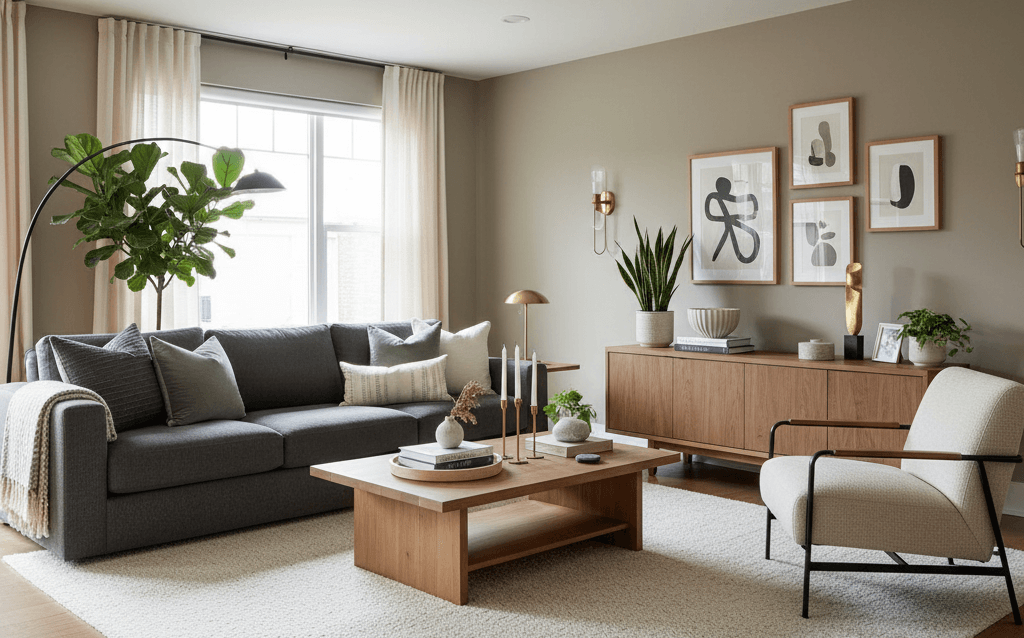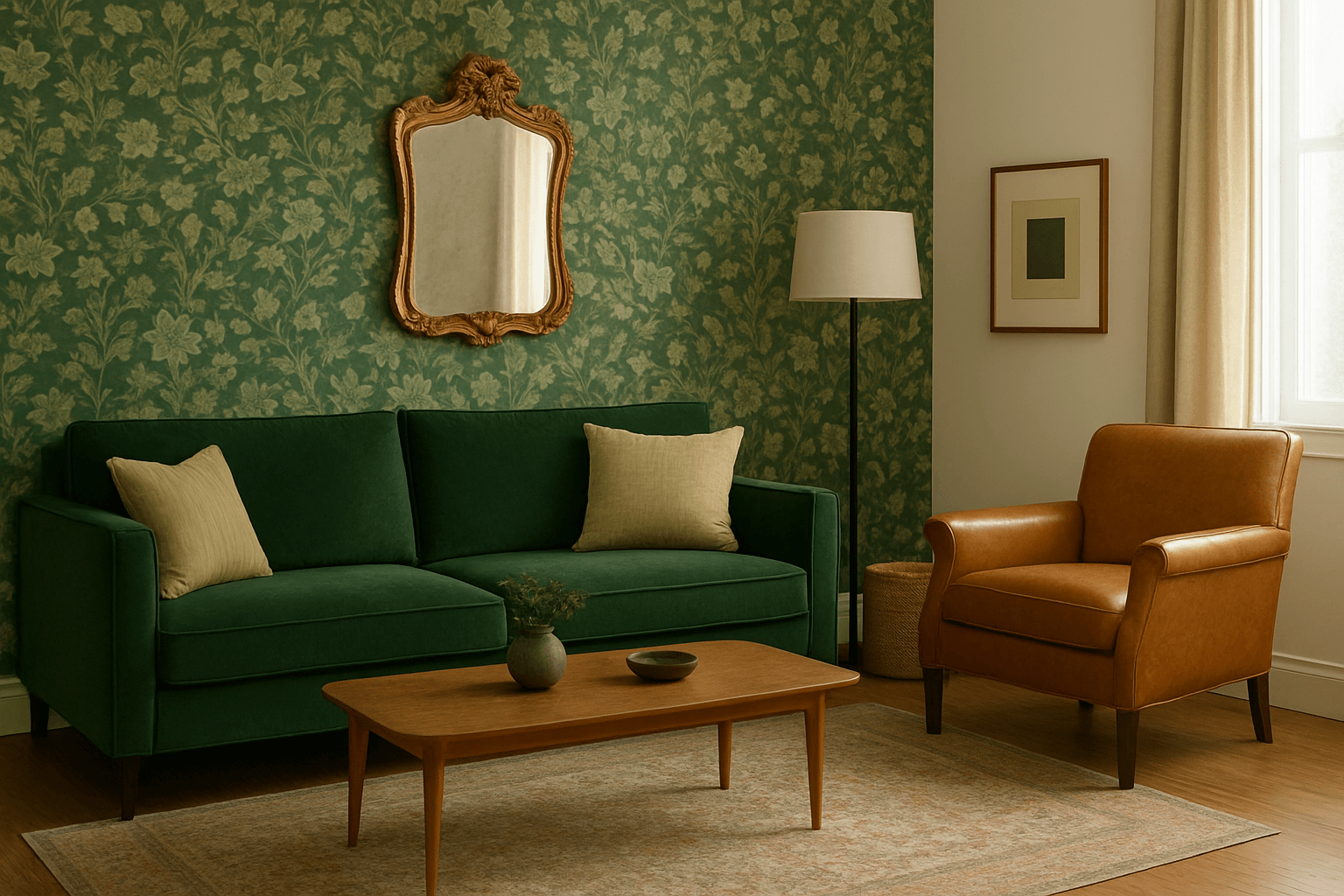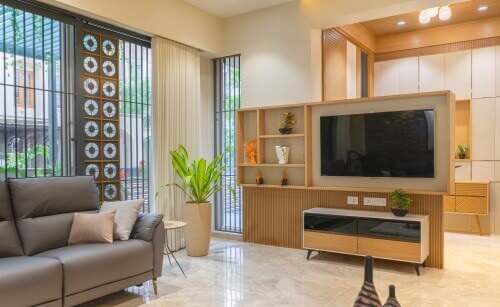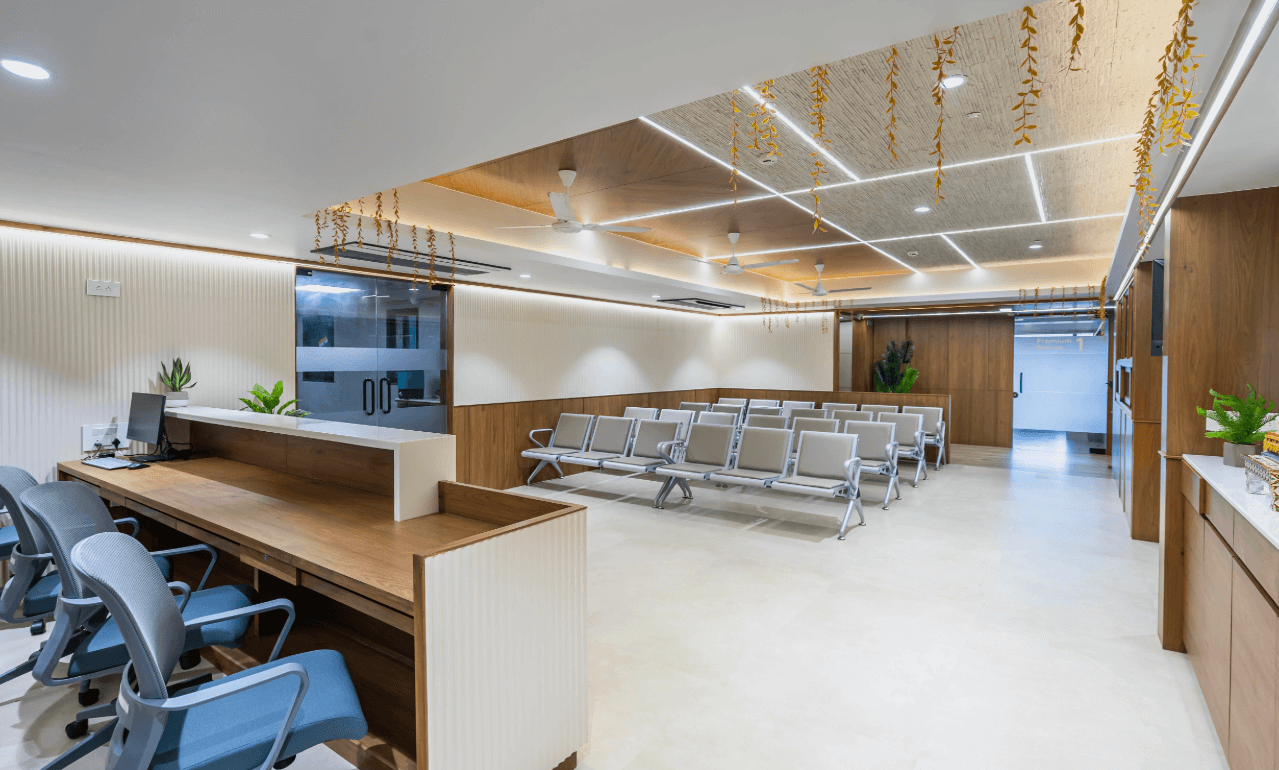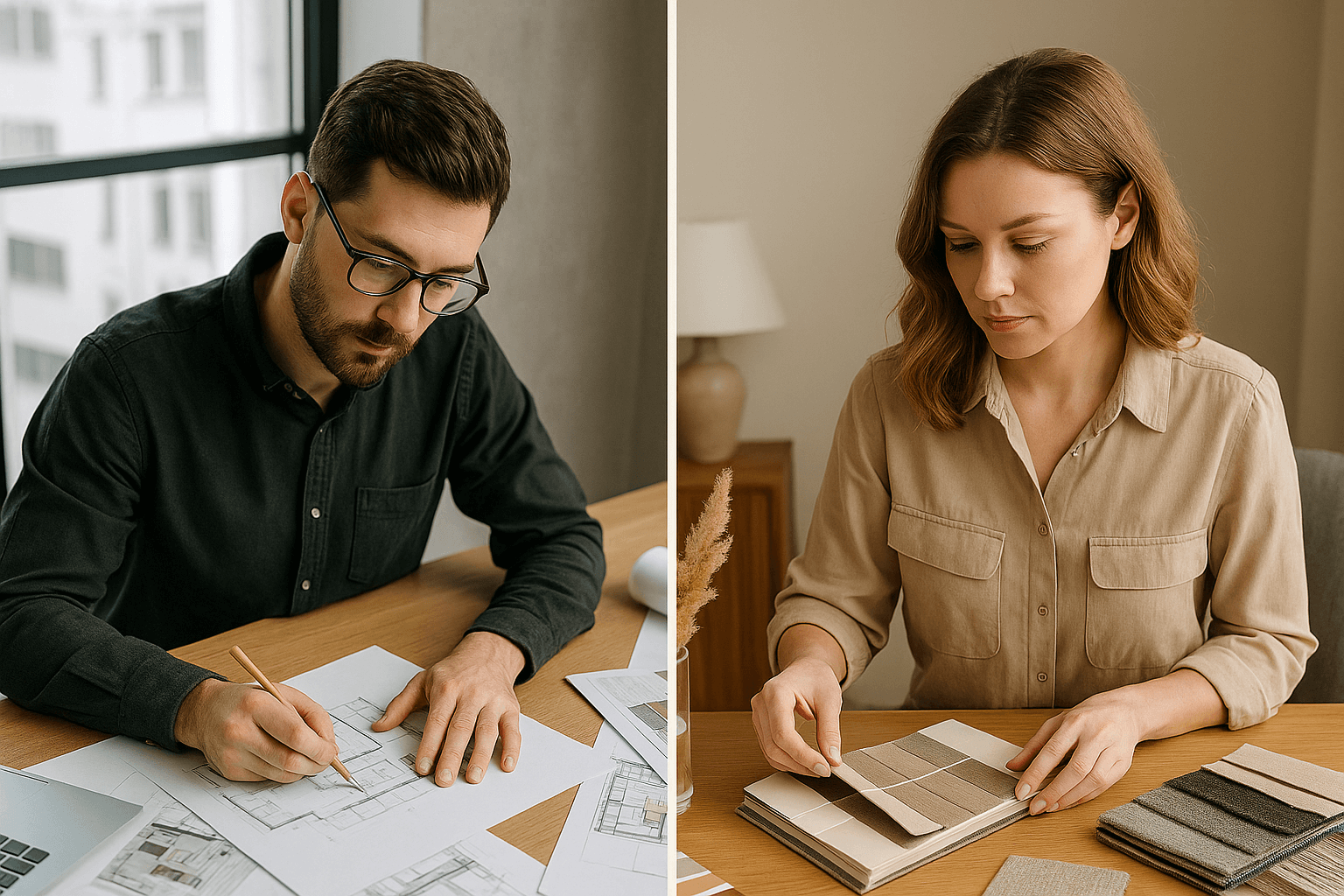Your living room is the heart of your home — the space where you relax, host guests, and make lasting memories. The wall colour you choose sets the tone for it all. The right wall paint colour combination for your living room can make the space look more vibrant, spacious, and welcoming, while the wrong one can make it feel dull or cramped.
With countless options available today — from modern two-colour combinations for living room walls to soft pastel shades and neutral tones — choosing the perfect palette can feel overwhelming. Whether you want a bright and cheerful look, a luxurious and elegant vibe, or a calm and minimalist aesthetic, your wall colours play a major role in defining the mood and design harmony of your home.
In this guide, we’ll explore the best wall paint colour combinations for living rooms, based on space size, lighting, interior theme, and trending styles in 2025. You’ll also find helpful tips from experts, Vastu-friendly colour suggestions, and ideas that fit perfectly for Indian homes and modern apartments.
Importance of Choosing the Right Wall Colour
Choosing the right living room paint colours is one of the most important decisions in home interior design. The wall colour sets the mood, influences the perception of space, and ties together every element of your décor — from furniture and flooring to lighting and accessories.
Colour is more than just a visual choice; it shapes how you feel in your home every day. Soft neutrals like beige or off-white create a sense of calm and spaciousness, while deeper tones such as navy or terracotta add warmth and depth. The key is to find balance — selecting a palette that reflects your personality while complementing the room’s natural light and layout.
The right interior wall colour ideas for living room also enhance harmony between the walls, furniture, and décor. For instance, cool tones pair beautifully with modern furniture and metallic finishes, while earthy shades work well with wooden textures and handcrafted elements.
Lighting plays a huge role too. Natural sunlight can make colours appear lighter and more vibrant, while artificial lighting in the evening can shift tones subtly. Testing a few shades on the wall before painting helps you understand how they behave under different lighting conditions.
In short, the right wall colour can make a small room look larger, a bright room feel cozier, and a simple décor look sophisticated. It’s not just about aesthetics — it’s about creating an atmosphere that feels like home.
Living Room Wall Colour Ideas Based on Space and Light
Choosing living room paint colours isn’t just about personal preference — the size of your room and the amount of natural light it receives play a crucial role in making the space feel comfortable, inviting, and well-balanced. Here’s how you can decide the right shades based on your living room’s space and lighting conditions:
1. Small Living Rooms
For compact spaces, lighter shades such as soft beige, off-white, pale grey, or pastel tones can make the room feel more spacious and airy.
Tip: Pair these colours with reflective surfaces, mirrors, or metallic accents to enhance the illusion of depth.
2. Large Living Rooms
Bigger living rooms can handle bold and deeper shades like navy blue, forest green, or rich terracotta. These colours create warmth and intimacy in otherwise expansive spaces.
Tip: Use feature walls in darker shades while keeping the rest of the room lighter to maintain balance.
3. Naturally Bright Living Rooms
If your living room gets plenty of sunlight, you can experiment with both warm and cool tones. Cool shades like soft blues, mint green, or grey work well to balance brightness, while warmer tones such as mustard or terracotta add vibrancy.
Tip: Avoid overly dark colours in sunlit rooms, as they may create harsh contrasts.
4. Dimly Lit Living Rooms
Rooms with limited natural light benefit from bright and reflective colours. Shades like creamy white, warm beige, light peach, or soft yellows can help make the space feel cheerful and inviting.
Tip: Use strategically placed lighting and mirrors to amplify the brightness of these shades.
5. Harmonizing With Furniture and Décor
Consider your existing furniture, flooring, and décor while choosing colours. For instance:
- Neutral walls complement modern and minimalist furniture.
- Earthy walls pair beautifully with wooden elements and rustic décor.
- Bold accent walls can highlight statement furniture or art pieces.
By analyzing space, lighting, and interior elements, you can select interior wall colour ideas for living room that not only look appealing but also enhance functionality, mood, and comfort.
| Room Size & Lighting | Suggested Wall Colour | Mood & Effect | Pairing Ideas |
|---|---|---|---|
| Small & Low Light | Light Beige, Soft Cream | Brightens the space, creates airy feel | Light wood furniture, white or pastel décor |
| Small & Natural Light | Pale Grey, Soft Pastel Blue | Modern yet cozy, enhances natural light | Minimalist furniture, metallic accents |
| Medium & Bright Light | Warm Taupe, Peach, Terracotta | Adds warmth without overpowering | Wooden furniture, earthy textures |
| Large & Bright Light | Navy Blue, Forest Green, Deep Grey | Creates drama and elegance | Neutral furniture, gold/brass accents |
| Large & Low Light | Light Grey, Soft White, Warm Beige | Prevents dark, gloomy look, opens space | Mirrors, light furniture, reflective surfaces |
| Natural & Earthy Theme | Olive Green, Terracotta, Sand | Connects interior with nature, calming | Woven textiles, indoor plants, rustic furniture |
Best Wall Paint Colour Combinations for Living Room
Ready to explore some color options? Here are my favorite color combinations that not only look fabulous but also suit Ahmedabad homes beautifully.
1. Beige and Teal for a Relaxing Oasis
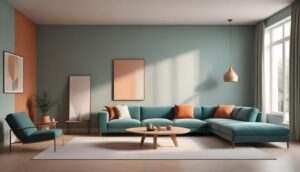
If you love calm, contemporary interiors, beige and teal make a flawless match. Beige provides a versatile, neutral base that complements any interior style, while teal adds just the right touch of freshness and sophistication.
This combination works beautifully in Indian homes as it balances the warmth of natural sunlight with a cool, breezy vibe. Beige walls keep the space light and airy, while teal can be introduced through accent walls, cushions, curtains, or decor pieces for visual interest.
- Why it works well: It creates a relaxed and soothing mood while maintaining a modern, elegant look.
- Pro tip: Use matte or eggshell finishes for beige walls and a slightly glossy finish for teal accents to enhance depth and light reflection.
2. Grey and Mustard for Modern Elegance

For a more dynamic and urban aesthetic, the pairing of grey and mustard offers sophistication with a hint of playfulness. Grey’s neutral tone makes an excellent canvas for art and lighting, while mustard adds energy, optimism, and cultural warmth — a nod to India’s traditional colour palette.
This combination works best in living rooms that aim for a modern yet cozy atmosphere. The subtle contrast also helps highlight architectural features like niches or statement furniture.
- Why it works well: It brings together cool and warm tones for visual harmony, creating depth without overwhelming the space.
- Pro tip: Use soft grey on the main walls and mustard on smaller accent walls or décor items like cushions, rugs, or armchairs.
3. Navy Blue and White for a Classic Touch
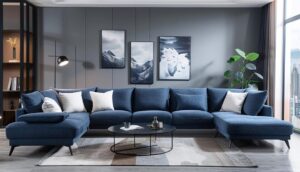
A timeless favourite, navy blue and white bring elegance and simplicity together in one stunning combination. White reflects light and visually enlarges your space, while navy blue adds richness, making it ideal for both traditional and modern living rooms.
This duo is perfect for homes that want a classy yet inviting feel. You can use navy on one statement wall or in furniture and fabrics while keeping the rest of the space crisp white for balance.
- Why it works well: The high contrast enhances sophistication while maintaining a clean, balanced aesthetic.
- Pro tip: Add metallic accents like silver or chrome, and layer white fabrics to keep the room light and open.
4. Earthy Tones (Terracotta and Olive Green)

Rooted in earthy tones, terracotta and olive green bring a natural and organic vibe to your living room. Terracotta introduces rustic warmth, while olive green brings calmness and connection to nature.
This palette works wonderfully for homes with wooden furniture, textured fabrics, or handcrafted décor. It’s ideal for Indian households that appreciate traditional aesthetics blended with modern sensibility.
- Why it works well: Both colours ground the space while keeping it cozy and visually rich.
- Pro tip: Combine this palette with woven baskets, clay pots, indoor plants, and jute rugs for an effortlessly earthy interior.
Expert Tips on Choosing the Right Colour Combination for Your Living Room
Choosing the perfect living room paint colours can transform your home, creating a space that feels welcoming, balanced, and stylish. Here are some expert tips to help you select the right colour combination:
1. Test Small Patches First
Before committing to a full wall, always paint small sample patches. Observe how the colour looks at different times of the day under natural and artificial light. This ensures your chosen interior wall colour ideas for living room work harmoniously with your space.
2. Harmonize with Flooring and Décor
Consider your flooring, furniture, curtains, and décor elements when selecting colours. For instance, earthy tones pair beautifully with wooden flooring, while bold colours like navy or teal can complement neutral rugs or curtains. Matching colours thoughtfully prevents visual clashes and enhances the overall aesthetic of your living room.
3. Balance Bold and Neutral Shades
Pair bold accent walls with neutral backgrounds to avoid overwhelming the space. This strategy allows you to introduce personality while maintaining a cohesive, relaxing environment.
4. Consider Light and Room Size
Lighter colours make small rooms feel spacious and airy, while darker shades add depth and coziness to larger spaces. Always factor in the room’s orientation and natural light exposure when choosing your living room paint colours.
By following these expert tips, you can confidently create a living room that is both stylish and harmonious, reflecting your taste while optimizing space and light.
Vastu Tips for Choosing Living Room Colours
Choosing the right wall colours for your living room can not only enhance aesthetics but also bring positive energy according to Vastu principles. Incorporating Vastu-based living room colours can help create a harmonious, balanced, and inviting environment for family and guests.
- North-Facing Living Rooms: Shades of green and blue are ideal for north-facing spaces. Green promotes growth and tranquility, while blue enhances calmness and mental clarity. These colours also complement natural light from the north, making the room feel airy and fresh.
- East-Facing Living Rooms: Light yellow, cream, or white tones are perfect for east-facing rooms. These colours attract positivity, energy, and warmth from the morning sun, creating an uplifting and welcoming atmosphere.
- South or West-Facing Living Rooms: Earthy tones like terracotta, beige, or soft browns work well for south or west-facing rooms. These colours help balance the intense afternoon sunlight and bring a sense of stability and comfort to the living space.
By combining interior wall colour ideas for living room with Vastu guidance, you can ensure that your living room is not just visually appealing but also promotes positivity, comfort, and balance throughout your home.
Frequently Asked Questions About Living Room Wall Colours
1. What are the best living room paint colours for small spaces?
For compact living rooms, lighter shades such as soft beige, off-white, pastel blue, or light grey are ideal. These living room paint colours reflect more light, making the space feel airy and open. Pairing them with subtle accent walls or colourful décor can add personality without overwhelming the room.
2. How do I choose wall colours that match my furniture and flooring?
To create a harmonious look, consider the tones of your furniture, curtains, and flooring before selecting interior wall colour ideas for living room. Neutral walls pair well with bold furniture, while soft accent colours complement wooden or patterned flooring. Testing small wall patches helps you visualize the final effect.
3. Can wall colour affect the mood of my living room?
Yes, colours significantly influence mood and atmosphere. Warm tones like mustard, terracotta, and beige evoke comfort and coziness, while cool shades like teal, blue, and green create a calm and refreshing environment. Choosing the right living room paint colours can enhance relaxation, social interaction, and productivity.
4. What are some vastu tips for living room wall colours?
According to Vastu principles, north-facing rooms benefit from green or blue tones to invite positivity, while east-facing rooms work well with yellow or white shades to encourage energy and creativity. Using Vastu-based living room colours can harmonize energy flow and enhance the overall ambience.
5. Should I use bold colours in the living room?
Bold colours like navy blue, mustard, or deep green can make a statement when used as accent walls or décor elements. For interior wall colour ideas for living room, it’s best to balance bold shades with neutrals to avoid overwhelming the space and to maintain harmony with furniture and lighting.
6. How can I test if a colour suits my living room?
Paint small patches on different walls and observe how they look in daylight and artificial light. Consider your furniture, flooring, and décor to ensure the colours complement the overall interior. This ensures your living room paint colours will look exactly as envisioned.
7. How many colours should I use in my living room?
For a balanced look, stick to two to three main colours: a primary neutral tone for the walls, an accent colour for one or two walls, and an optional third colour for décor or furniture. This approach makes your interior wall colour ideas for living room visually cohesive and stylish.

